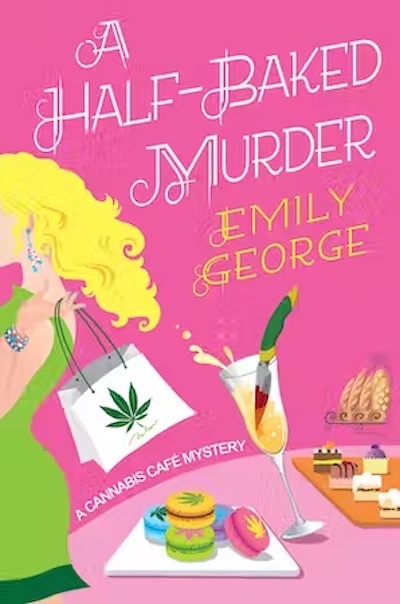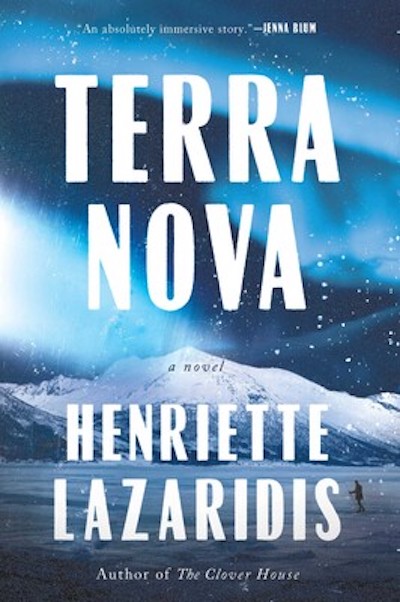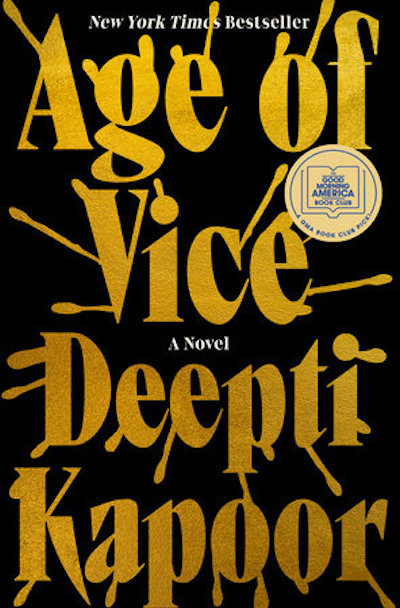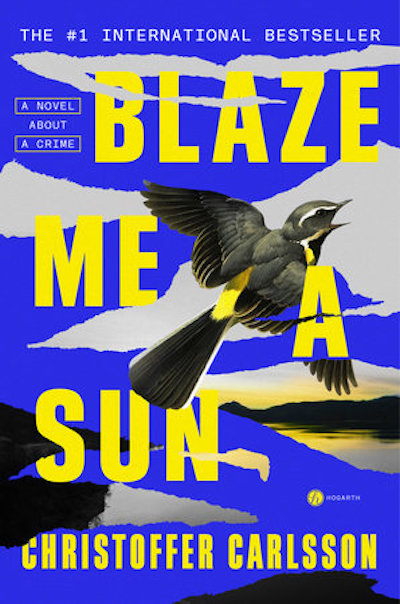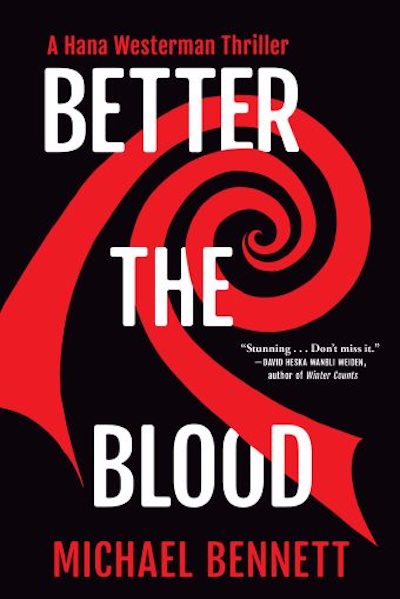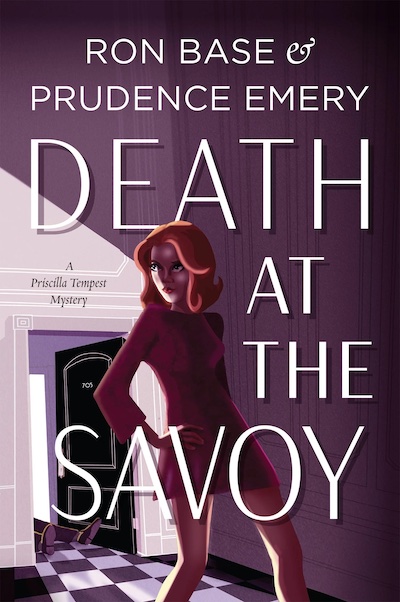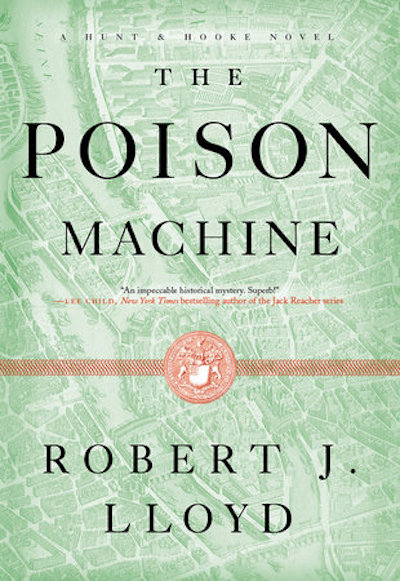This is one richly drawn mystery that does a great job of introducing us to a wonderful protagonist, a compelling group of characters, and a fascinating community. Poor 28-year-old pastry chef Chloe Barnes. Not only does her engagement end up in smoke, she gets panned in a review, then learns that her beloved grandmother is being treated for cancer. Time to leave Paris and head home to Azalea Bay, California. But what to do with herself? Fortunately, her Aunt Dawn has an idea: take her fancy, pastry-making skills and apply them to cannabis to create edibles so good they can hold their heads high in the best pâtisseries. Together they begin to plan for a store, Baked by Chloe, when there’s a murder—of a creepy guy who’s loathed by most of the female population of Azalea Bay—and Aunt Dawn ends up the number one suspect. Clearing her aunt’s name draws Chloe further into the past and the community as she creates a list of suspects. The book also goes deep into the weeds (see what I did there?) as Chloe learns the complexity of cooking with cannabis. And did I mention Jake? Cute, single, and lives next door. In this debut, author George has laid the foundation for a series that feels fresh, young, and full of surprises.
Star
This is an espionage story with a difference, featuring not a dashing ladies’ man but a young CIA operative, Melvina Donleavy, who knows her bureaucracy and sticks to it, offering an interesting look at modern-day tradecraft. Mel appears to her CIA colleagues to have no special skills, but when she’s in danger, top levels of government get involved. Readers are in on the picture, learning from the get-go that Mel has lifelong recall of every face she sees. It freaked out a middle-school crush when she mentioned having seen him at a sports event that had thousands in attendance, but when she’s sent to Byelorussia in 1990 to see if particular Iranian nuclear scientists can be spotted it’s a handy talent indeed. Mel and her colleagues are undercover, the others posing as accountants who are sent ahead of a U.S. donation to make sure none of it is earmarked for nuclear activity, she as their secretary. The stultifying Soviet observation machine moves into place, with the spies watched everywhere they go and a rigid air of we-know-you’re-spies-and-we-know-that-you-know-we-know coming off their hosts in waves. The group soon hears that a serial killer, the Svisloch Dushitel, or Svisloch Strangler, is at work in Minsk, but as its illegal to even mention the crime of serial killing, Mel has her work cut out to get to the bottom of it. Espionage, a love story, and murder mystery, all by a Department of Defense contractor assigned to the former Soviet Union in the ‘90s? Yes, please.
It’s hard to pull off a novel that attempts to have equal footing in two genres—never mind three—and typically one of the genres ends up taking on a minor role. Just think of all those unrequited romances lurking in the background of crime novels, sometimes through a whole series. But The Mimicking of Known Successes, a work of speculative fiction, a traditional mystery, and a romance is a walloping success. Earth is no longer a livable planet, and humans have long been settled on a colony located on the far outskirts of Jupiter, itself a gas giant. The worldbuilding here—how can humans survive in such an inhospitable environment?—is both subtle and fascinating. Layer over that a very traditional, academic, British mystery—think Gaudy Night—add a heart-felt romance, and you have one of the most unusual mysteries of the year. Terse and reserved, Investigator Mossa is seeking a man who’s gone missing, she doesn’t buy the notion that he committed suicide. He’s an academic, so the search takes her back to her university and Pleiti, an old girlfriend who’s now a professor researching the possibility of humans returning to Earth. Together they set out to find the missing academic, save themselves from death, and maybe even help rescue Earth from a calamity. Older is the author of the Centenal Cycle Trilogy. This would be a great choice for a book group.
This novel should come with a warning label: start this book at your own risk. It’s that suspenseful, that seductive. We meet our hero, Morgan Faraday, running through the NYC subway to escape from Sebastian, her ex-fiancé, and two armed rent-a-cops. How does love go so wrong? We then jump to ten months ago for the backstory that answers this question. Morgan—who identifies as Black, she has North African heritage via Moorish Spain, but is often assumed to be white—escaped from a poor Pennsylvania town for NYC and art school. A textile artist, she’s struggling when she meets billionaire Sebastian Reid, the CEO of one of the world’s largest energy companies. The answer to all of Morgan’s problems? Perhaps, but sleeping with a man you don’t love and barely find attractive is still work, and even with best friend Dashawna’s how-to-marry-a-millionaire advice, Morgan remains conflicted. Marrying white men for financial security, while necessary, was never a good decision for the women in her family. Worse, once she moves in with Sebastian, she discovers that his claim that his company is going green is just a façade, and he’s still responsible for several ecological disasters, with communities of color the most adversely affected. Encouraged by an oh-so-hunky environmental activist, Morgan begins to spy on Sebastian, recording his calls and filming his meetings. It’s incredibly anxiety-producing, and readers will be madly racing to the book’s surprising conclusion. Social commentary, feminism, racism, family history, courtroom drama, plenty of suspense, and a very hot love affair all come together for one powerful read.
The supposed hero of this book is Captain Edward Heywoud, a paragon of colonial manliness who “[trails] ambition and resolve.” For years, he’s climbed the world’s highest peaks, sometimes with his photographer wife, Viola Colfax. Now, in 1910, he and long-time climbing companion James Watts and several other hardy men and their sled dogs are tackling the ultimate challenge: to reach the South Pole. And not just make it there, but do so before a Norwegian expedition claims the glory for its king rather than England’s. In a parallel struggle is Viola, who also isn’t the book’s hero, fascinating though she is. She’s in love with Edward, although he disapproves of many of her activities and is fond of telling her what she will do, but she also loves the gentler James, and the two are having an affair. While the men are away—a voyage chronicled in gripping and often horrible detail by author Lazaridis—Viola takes on the challenge of documenting the suffragette movement, a project interrupted when the men return and their photographs lead her to think their triumph is a fraud. As to the hero here, it’s not a particular person but the bodies described in this gorgeous and devastating work: James’s and Edward’s in Antarctica as they compare the calories they use against the remaining food and end up eating their dogs; the hunger-striking suffragettes, whose emaciated, police-battered bodies feature in a fascinating project by Viola; the steadfast figure of Mary, Edward and Viola’s maid, who indirectly makes the expeditions possible but is taken for granted by the family; and the body of the Earth, which tries to kill the men even as it enables their fame. The frustrating, brilliant Viola is one of my favorite characters, and this book one of my favorite reads, in a long time.
A bold, ambitious, and sprawling work that can only be described as Dickensian, so rich is it in socioeconomic observation, unforgettable characters, sentimentality and violence in equal measure, and, of course, the pleasure of plot. Like any good epic, the novel opens in media res, at a horrific auto crash that kills five homeless people. Behind the Mercedes’ wheel is Ajay, loyal servant to Sunny, an enormously wealthy playboy whose riches protects him from any retribution. But Ajay, of course, wasn’t driving the car, he’s a mere prop positioned to take the fall. How did he end up here? The novel heads back to Ajay at age eight, when he was sold into servitude, his eventual meeting with Sunny in the Punjab mountains, and the move to New Delhi, where he emerges as Sunny’s servant, drug dealer, chef, and bodyguard. Here the narrative jumps to Sunny, still obsessed with his gangster father, whose corruption and violence he wants to transcend while continuously finding himself enmeshed in it. Only his lover Neda, a journalist whose passion for Sunny is outweighed by his immorality, can seemingly reach through to him. As the novel moves among these three characters, all pushed to their very edges, readers are left to wonder whether anyone will escape alive. Brilliant and engrossing, terrifying and heartbreaking, this is one of the best books of the year. Happy to follow these characters anywhere, I can only hope this is the first in a trilogy.
Major events in Swedish history that caused the nation to see itself anew parallel the events in this book, with the town of Halmstad a microcosm of the larger turmoil. As the book opens, a woman is found in the back of a car, raped and murdered. The crime will always be linked in the minds of locals with the (real-life) assassination of Sweden’s prime minister, Olof Palme, which happened on the same night, February 28, 1986. Halmstad is in a staid area, where everyone knows everyone, the kids play soccer with a beloved coach, and what farms are left are the quiet backbone of life. The death of Palme and of Stina Franzén, the murdered young woman, cause a kind of shocked introspection whose weight pervades Carlsson’s writing. Horror surfaces once again when another woman disappears the day before the relatively nearby Chernobyl nuclear reactor explodes on April 26, 1986. Chernobyl is “on the other side of freedom,” but even given that the crimes are in much-more-open Sweden, investigator Sven Jörgensson can’t catch the man who taunts him with phone calls and promises there will be more. As years go by, Sven’s son becomes involved in the impossible puzzle, as does a writer who grew up locally and who has returned to write about the crimes (and who narrates this tale). Following events over several decades brings us to care for the characters as much as the outcome of this case, one that’s as unpredictable as it is tragic. The author’s U.S. debut (he’s the youngest winner of the Best Swedish Crime Novel of the Year, for The Invisible Man), this is an absorbing and thought-provoking puzzle.
A tight and tense police investigation that brilliantly integrates Māori culture and history. When a gruesome murder in contemporary Auckland, with the victim found hanging in a secret room within an abandoned building, leads to another murder, Māori detective Hana Westerman realizes she may be on the trail of New Zealand’s first serial killer. But what connects the victims? A daguerreotype from New Zealand’s bloody, colonial past—plus texts and images the killer sends her—provide Hana with a terrifying road map to what’s ahead if she can’t stop him. Through Hana, author Michael Bennett (Ngati Pikiao, Ngati Whakaue) connects the past and the present, both in New Zealand’s history and within Hana’s own life. To find the killer; keep her family safe, especially her university-age, politically charged daughter; and face a painful incident from her youth, Hana must undergo a transformation. And the woman we meet at the end of the narrative is indeed far different from the one who begins it. This is crime fiction at its best: well-paced, richly characterized, and fearless in confronting the pain of colonialism.
We’re in the mad, mod, mini-skirted world of London, 1968—the height of the swinging sixties. Where better to catch all the action than from a perch at the world-famous Savoy Hotel? Nowhere, unless you are young Priscilla Tempest, head of the Savoy’s press office, and arrive at work only to discover that your date from the previous night—Mr. Room 705—has been found quite dead. Odd, since when you left him he was a little too alive. Plus, it turns out that he’s a bit of an arms dealer, and not the caviar dealer he claimed. So begins Prudence’s crusade to clear her name, if not her reputation, keep her job, and maybe even stay alive. This book is outrageously funny, peppered throughout with all-too-realistic cameo appearances from the likes of Noël Coward, Richard Burton, Elizabeth Taylor, and even a member of the royal family. Add to the mix a Soviet spy, a louche but handsome reporter, a fanatical monarchist from Scotland Yard, a Spanish gigolo, and serve it all accompanied by a nice flute of Bucks Fizz—that’s what the British call a Mimosa. And who said you don’t learn from fiction? Anglophiles, lovers of comic crime fiction, and anyone in need of a break from the present day will adore this book. I’m off to The Carlyle for a Fizz myself, don’t bother ringing until Book 2 is out.
When Lloyd first introduced Harry Hunt in The Bloodless Boy (a firstClue starred review and a New York Times “Best New Historical Novel of 2021”), the 17th-century physicist was Robert Hooke’s assistant and the investigator of the gruesome murders of London boys. Here Hunt’s fortunes are doing both worse and better. On the glum side, we see his humiliating failure to replace Hooke as Curator of Experiments at the Royal Society for the Improving of Natural Knowledge, with Lloyd’s almost-tactile picture of academic politicking giving the book a strangely modern feel. Hunt still finds prestigious work though: when the skeleton of a dwarf is found, Queen Catherine requests Hunt as investigator. Captain Jeffrey Hudson was “her” dwarf, and Hunt is tasked with finding out both who killed him and who the still-living man is who claims to be Hudson but is taller. The physicist’s urgent work this time (“the body will not keepe”) takes him far from the Thames shores he clung to in The Bloodless Boy. France is a major setting in the book and a final lengthy and very exciting scene takes us to the Queen’s Catholic Consult, where restrictions against the much-loathed group will be discussed. Lloyd again succeeds in creating an immersive look at the various layers of life his hero encounters, one that draws enough on real events to treat readers to intriguing history, but that also adds just the right fictional elements to keep the plot rich. Another winner

